Check out our new IG post!

Follow us on Instagram:
http://www.instagram.com/lovebirdyaccessories
Inspired by Dog Theme. Buy it Here


Check out our new IG post!

Follow us on Instagram:
http://www.instagram.com/lovebirdyaccessories
Inspired by Dog Theme. Buy it Here
How many of you believe animals can actually feel? Do you believe a penguin can recognize a person who saved its life? More, do you believe that penguin swims 5,000 miles from the ocean just to visit a man who saved its life? This is actually a true story! A Magellanic penguin, Dindim, swims around 5,000 miles every year just to see a man, Joao Pereira de Souza, a humble retired bricklayer lives in Provetá Beach in Ilha Grande, Brazil.
This heart touching story (reported in CNN) started in May 2011. Dindim was covered in oil and injured in the state of Rio de Janeiro and found by Pereira de Souza. He helped the little penguin clean his body to remove oil residue and fed him with food until he is healthy enough to return to the sea. However, the story didn’t end here, Dindim returns to the same spot every year to Mr. Jaoa’s backyard and now become part of his family.
Magellanic penguins are very loyal to their partners and they nest in the same place every year with the same partner. We don’t know what’s going on in Dindim’s mind, but one thing we can be certain is that he knows exactly where to go and who to find. This story captured the hearts of many people and tells us how loyal an animal could be, especially this involves loyalty to human instead of its partner, which is a very rare case.
This touching story actually reminds me about a very heartbreaking reality:- Human has never stopped destroying the wildlife and killing wild animals directly or indirectly. No doubt most of the people are amazed by smart bird like Kea, or loyal penguin like Dindim when we area reading “interesting” news like this. “Interesting” news like Dindim can easily be a leisure-time topic, but how many of us are actually care about these beautiful creatures? Who would really think of the wildlife or wild animals when they are working so hard everyday in offices for their livings? Worse, who would really remember the wildlife / wild animals are being killed because wild animals are “harmful” to their life / properties; or being forced to leave their homes because our city development needs more land that human should be “more superior” than wild animals in using the land?
Perhaps it’s time for us to stop a while to think….
For years animal rights activists group has been arguing that animals can actually feel the pain and their lives should be respected, even they have to be killed, they should be killed humanely. They also believe that saving wild animals is actually saving the planet because preserving wildlife is the basic way to preserve biodiversity and keep a balanced ecosystem which human can be greatly (and negatively) impacted if something goes wrong with the system.
Saving wild animals is important?
Maybe you don’t think animals feel, or you think human rights should be much more important than animal rights. Or you may think all living things in this planet can adopt to the changes and the “balance” in ecosystem will come back eventually. If this is really the case that makes you not quite a wild animal lover, then I hope the 4th important reason for saving wild animals sound persuasive.
The 4th Reason – Medical Research Inspired by Animal
You should help preserve wildlife because they are extremely valuable in the medical related researches. No matter how smart we are, we can’t deny that many of our new technologies were actually inspired by animal in mother nature. Our great aviation pioneers – Wright brothers, invented the world’s first successful airplane inspired by birds flying the sky; Dragonflies inspired designers of helicopters; “Sharkskin” coating for swimwear inspired by Sharks…… Many of those are extremely important modern technologies that changed the human history. If you think such animal-inspired technologies are only used for creating a more convenient way for human to live, then you must have overlooked the importance of animal-inspired technologies being used in medical aspects.
Animal-inspired technologies are widely used in medical research. Almighty God created different creatures in this planet with different survival skills that could be very very useful for human. Take Kea (an extremely smart parrot we introduced in previous blog post “Kea – The Smartest Parrot in the World”) as an example. The researchers are working on the secret of how this smart bird can learn things (instead of just trial-and-error like many other animals), scientists believe that the research may shed light on human learning process to cure related decease. Another example is lamprey (a kind of “fish” physically resemble eel, characterized by a toothed, funnel-like sucking mouth): the nervous system of lamprey is so simple, but complex enough to control a swimming motion. Scientists are particularly interested in the secret of this design and hope it could be an excellent model for a micro-robot that would be sensitive to its surroundings and move freely around inside a body. How can it be used? For curing cancer! If this micro-robot research is successful, that would allow it to check for tumors or blood cloths or chemical indicators of various diseases!
Indeed there are countless examples of medical research inspired by animals. So please. stop thinking that protecting wildlife is none of your business! Just imagine how many people we could help if scientists could solve the secret formula of gecko’s regeneration ability. We may not have the chance to save a sick penguin, but we can definitely pay more attention to protect the wildlife and I believe that we could create a better world if we work together!
Typhoon is close friend of Hong Kong, it comes to visit us every summer most frequently from Jul to Sep. Sometimes this close friend visited Hong Kong late like the one stampeded Hong Kong on last Friday, on mid-Oct. Maybe because of the rain clouds were blown away by the strong wind, the weather on last Sat (one day after the typhoon day) was surprisingly sunny, so my wife and I decided to go hiking in Wu Kau Tang (a beautiful place in Hong Kong)
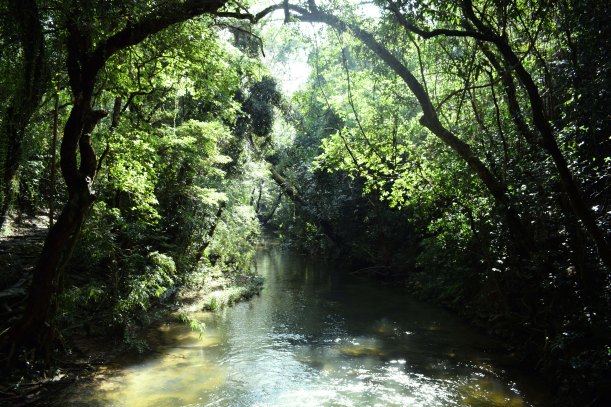
The weather was super sunny and actually was a bit hot and humid. There was a stone bridge with a river. It was very close to the entrance and you can take some beautiful pictures here.

The road was very easy to walk at the beginning!
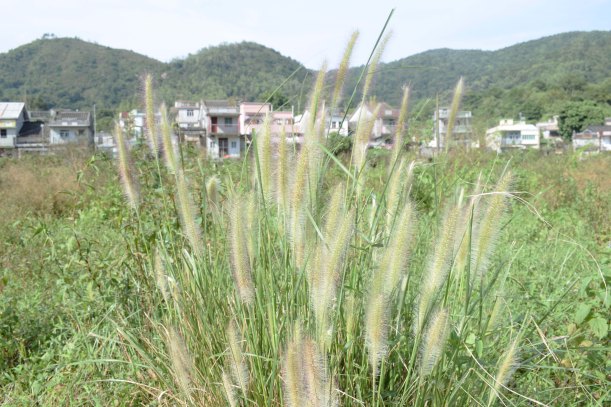
Miscanthus was beautiful.
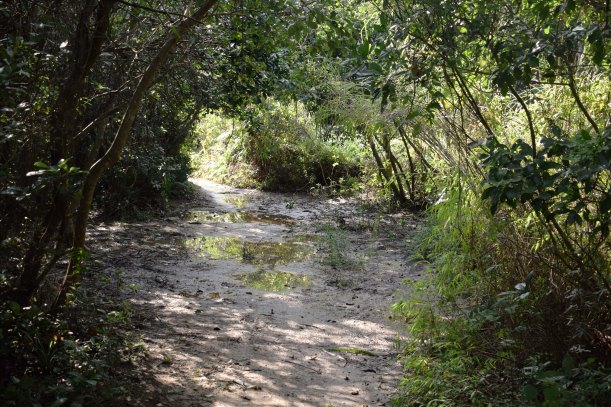
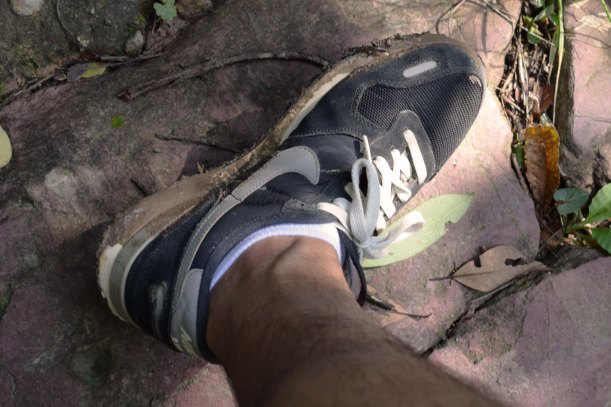
After 10 to 15 minutes walk, we started to see muddy road (I believe this road would still be okay if I wasn’t come after typhoon)
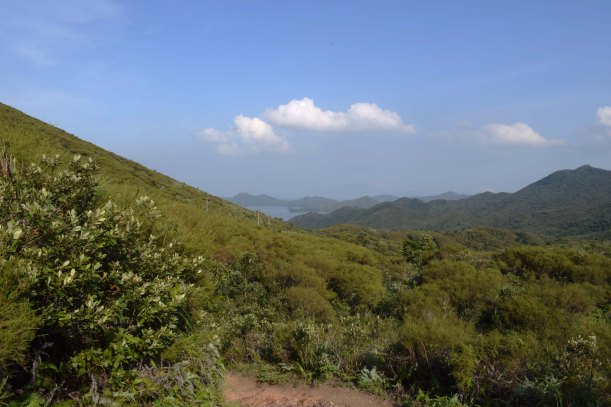
There were two ways to reach the destination (“Sanya Village”, not sure if this is the official name) – uphill or alongside the river. We selected the uphill road hoping to have a less muddy road.
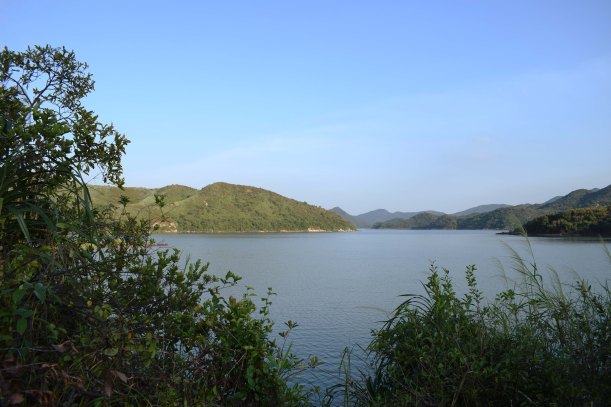
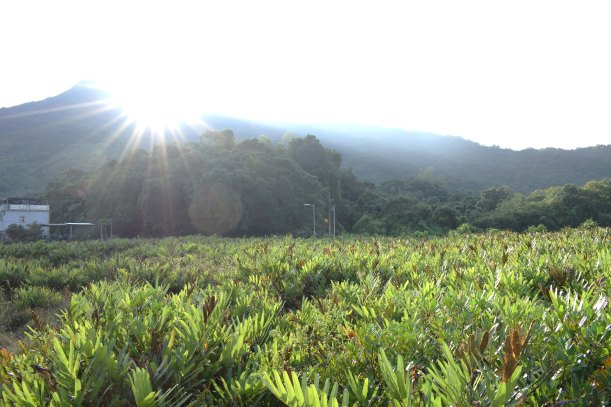
We didn’t see anyone in the uphill road and we were so worried about getting lost (because it was getting darker and darker). Fortunately after 2 hours walk, we finally made it to Sanya Village!
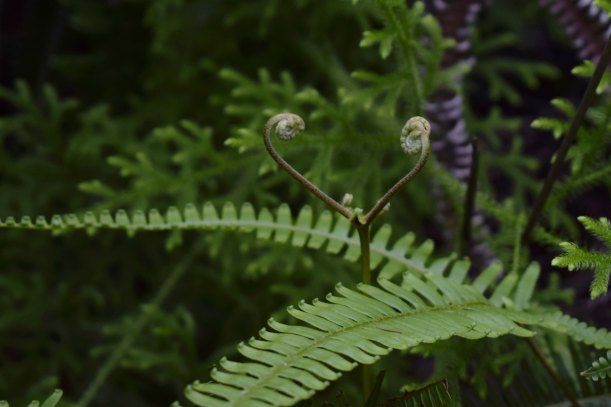
Interesting plant!
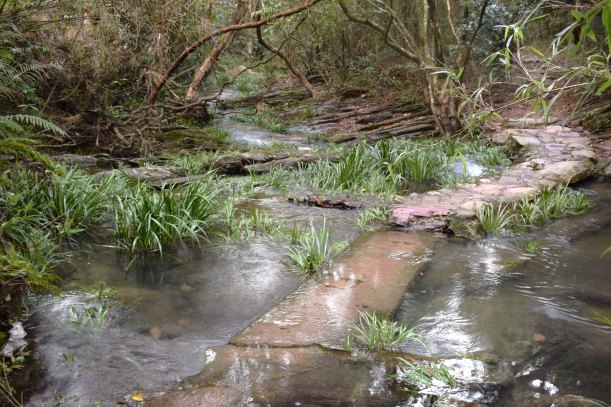
It was getting darker and darker and we selected the riverside road to go back. Some stonebridge was flooded with water!
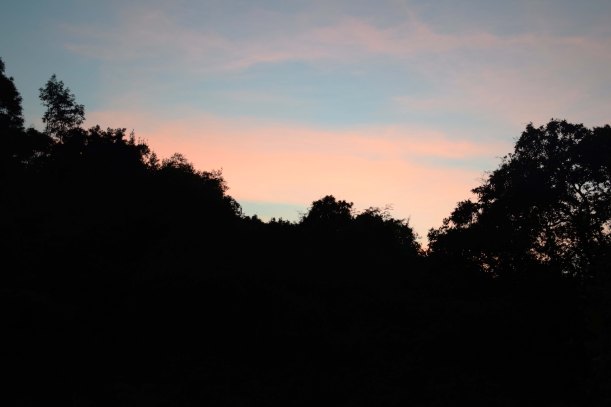
After 2 more hours walk, we finally made it! It was so dark and we were so unlucky to see fireflies! (Unfortunately it was too dark to picture it)
Kea – The Smartest Parrot in the World
The Kea is a mountain parrot that sounds like its call – “keeee aaaa”. It is a large species of parrot found in forest and alpine regions of the South Island of New Zealand. An adult Kea can grow as large as 48cm (around 19 inches) long, and weigh 0.8 to 1 kg. The color of this bird is mainly olive-green with scarlet underwings and a grey-black upper beak which is large and curved. Female Kea weigh around 20% less than male Kea and the bill is also comparatively shorter.
Habitat
Kea can be found from coastal dunes to the high alpine peaks of the South Island such as Arthur’s Pass and Aoraki/Mount Cook National Park in New Zealand. They are commonly found in forests and adjacent subalpine and alpine zones, and mainly nest in their native forest.
Characteristic
Kea are known for their intelligence, boldness and curiosity. These characteristics are extremely important for them to survive in a harsh mountain environment but they also get themselves into trouble, which we will talk about in a later section of this article. They are notorious for attacking sheep and very unwelcome by local sheep farmers because sometimes sheep die from wound infections or from accidents when they try to escape the attack. Though they do not directly kill the sheep, they are being treated as pests to local sheep farmers.
How intelligent are Kea?
Researchers have been researching the intelligence of Kea for years in hopes that the results can shed light on the process of human learning. In the universities of Vienna and Oxford, researchers tested Kea’s problem-solving skills by presenting them with a food-containing box, for which Kea needed to use different methods to “solve” a problem to get food – for example by pulling a switch, using a marble to knock the food out, using a stick to poke the food out and opening a window with a lever. Once the how-to-get-food solution was mastered, researchers did further testing on the Kea: they prevented all the previous actions from working. Surprisingly, the smartest Kea quickly learnt another new way to gain access to the food. In this research, the Kea was not trained to perform such actions to get food, and it wasn’t done by simply trial and error either. Instead, it was all about learning and observing! This is especially important for researchers to find out how a human child learns language, because the language learning process is not merely a trial-and-error one and researchers still don’t have the full picture yet.
(https://www.youtube.com/watch?v=uLjZS-cWzmk)
Another intelligence test of Kea was carried out in Auckland University, and the preliminary result found that Kea displayed a penchant for commerce! In the preliminary experiment. “One of the researchers, PhD candidate Megan Heaney, did a few transfers backwards and forwards and, since then, every time the Kea see her they run up with a stick or a stone and try to trade it.” The preliminary experiment also indicated that Kea have the ability to delay behavior until the conditions are right to get a better result, which is quite similar to chimpanzees and elephants.
Kea are extremely curious and they are very well known for damaging cars at South Island’s ski field carparks. Believe it or not, it was reported that some tourists’ money / passports had been stolen by Kea, because they are keen on discovering new things and love interacting with humans!
Saving Kea from Extinction!
The wild Kea population has dropped to as low as 1,000 to 5,000 according to the estimation done by conservationists. Recent studies from the Kea Conservation Trust have found that two-thirds of all chicks never grow to the fledgling stage. Unlike some other birds in New Zealand such as Kiwi, Kea are not welcomed by some people because they damage cars, tents or buildings and they attack farm animals. “Stealing”, of course, is also one of the reasons why they are often not welcomed by humans. It was estimated that 150k Kea were killed from the 1860s onward due to a government bounty introduced after sheep farmers complained about the Kea. The reason why they were killed is simple – they cause financial loss to local farmers!
Researchers have currently identified three known threats to the survival of this smart and beautiful parrot. The first one is non-native animal species; because Kea nest on the ground, this makes it an easy task for predators to attack the chicks during breeding.
The second one is obvious – humans. Kea are curious about everything, including humans and what humans bring to them; vivid-colored objects, books, even coffee, and of course food are all huge temptations to Kea, especially food and drinks that provide much higher energy to Kea than their natural food such as berries, roots, shoots and insect larvae. Once they are “addicted” to these “junk foods”, young Kea may lose the important survival ability to find their natural food. Moreover, the abundant high energy food source by humans greatly helps to reduce their time used for food finding. This means they now have more spare time to explore the human world further, which accelerates their extinction. Not to mention many of them are still hunted by humans because they damage properties (such as sheep or car window wipers).
The last but certainly not least threat to Kea is less obvious – lead poisoning. Lead is reported to have a sweet taste that is appealing to Kea. There are thousands of old buildings and huts dotted around the South Island and lead is often found in these. By chewing the lead fixtures of these old buildings, some Kea may get lead poisoning and their brains are damaged severely as they accumulate so much lead in their bodies. According to a study undertaken by researchers at the Department of Conservation and the New Zealand Wildlife Health Centre at Massey University, 64% of Kea in populated areas had blood lead levels high enough to cause lead poisoning, and 22% had elevated levels. Not surprisingly, the study had shown that the lead poisoning problem in populated areas was higher than that in remote areas.
Survival of the fittest – it is easy to accept that living things with low skill / low intelligence are more likely to face extinction. It is ironic that Kea, such a “skillful” and intelligent bird, is now facing extinction. Indeed, it is fairly sad that such a human-loving (at least they love to approach humans) bird ends up being killed either directly or indirectly by humans.
Genesis 2:15 “The Lord God took the man and put him in the garden of Eden to work it and keep it.”
How to Protect Kea from Extinction
To protect Kea from extinction, we need to minimize or eliminate the above three threats to Kea’s survival. For the non-native animal predators, the New Zealand government recently unveiled an “ambitious goal” to eradicate all non-native predators in New Zealand by 2050. According to John Key, the prime minister of New Zealand, these “pests” cost the country’s agricultural industry NZ$3.3billion (US$2.3billion) annually, killing about 25 million native birds (including Kea) every year.
Another way to protect Kea is for them to avoid human contact. We first need to educate people to love and try to understand their “naughty” acts so that less Kea will be killed by humans. Also, we should try to keep this alpine environment wild in order to remove temptation from Kea. AND PLEASE DO NOT FEED KEA!
Unfortunately, the lead poisoning threat is by far the most difficult question to solve. There are so many old buildings / huts in that region and the coordination or co-operation between landlords, conservation parties, volunteers and contractors involves a huge amount of manpower and resources.
If you want to help protect Kea from extinction, you may also consider making a donation to the Kea Conservation Trust. Together we can save Kea from extinction!